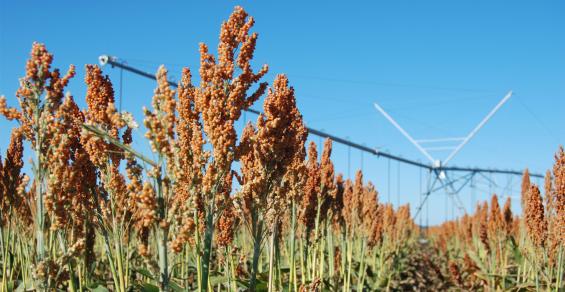Is it really time for #Plant2022? Time sure seems to go quickly with a 9-month-old in the house.
As I write this, corn has been up in the Lower Rio Grande Valley of Texas for a couple weeks now, and sorghum planters are beginning to roll across the Coastal Bend. In another month, planting season will be fully underway just about everywhere. I love this time of year!
With drought creeping back into the Sorghum Belt, input prices seemingly climbing higher each day, and most sorghum bids holding at higher-than-normal levels (at least from a historical standpoint), sorghum is going to be a good option on more irrigated acres than ever before.
Sure, sorghum yields less than corn in situations where irrigation water is plentiful, but if nitrogen or phosphorus availability is the bottleneck rather than water, it doesn’t matter how many times the sprinkler goes around. In those situations, planning for a solid irrigated sorghum crop now likely makes the most sense from a profitability and risk standpoint.
Some benefits of irrigated sorghum include:
Lower risk. Sorghum produces an initial bushel of grain 4 acre-inches sooner than corn. As a result, in areas needing less irrigation (think central Kansas), a farmer could have an outside shot at an irrigated yield with very little supplemental irrigation. The crop also withstands heat better and has an uncanny ability to wait for moisture, making it a good option in areas where it’s still dry (and there are many such areas).
Water efficiency. Sorghum gives farmers the ability to use water more efficiently. I was visiting with a farmer a couple weeks ago who almost tripled his cotton yield by planting a half of an irrigated field to sorghum a month earlier than the cotton he planted on the other half. Netting the yields of each crop across the entire field, the total yield (of any crop) from the field doubled — just because water was used more efficiently with the staggered planting of each crop.
Sustainability. Reductions in irrigation water usage are good from an environmental standpoint. Beyond the water saved, it takes less energy to pump less water, and this means a smaller carbon footprint. And going back to the farmer who doubled his total yield, the carbon intensity associated with irrigation was cut in half for that field. That’s an incredible statement. Will the market pay for it? I’m still not sure, but it’s a great accomplishment, nonetheless.
Farmers who decide to take the plunge and plant irrigated sorghum should remember to keep available moisture above 50% in the top 3 feet of the soil profile. Heads begin forming 30 to 40 days after crop emergence, so watching moisture at this stage is the most critical. After that, apply limited moisture at boot stage and during grain fill.
Duff is executive vice president for National Sorghum Producers. He can be reached by email at [email protected] or on Twitter @sorghumduff.
SORGHUM FOCUS: A little moisture can go a long way when it comes to sorghum and a continuing drought.



